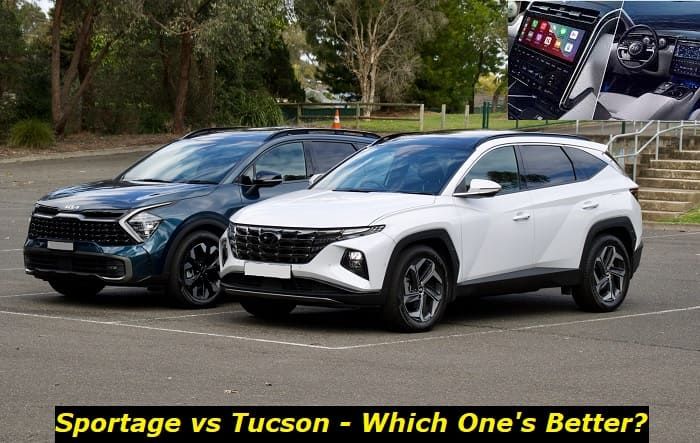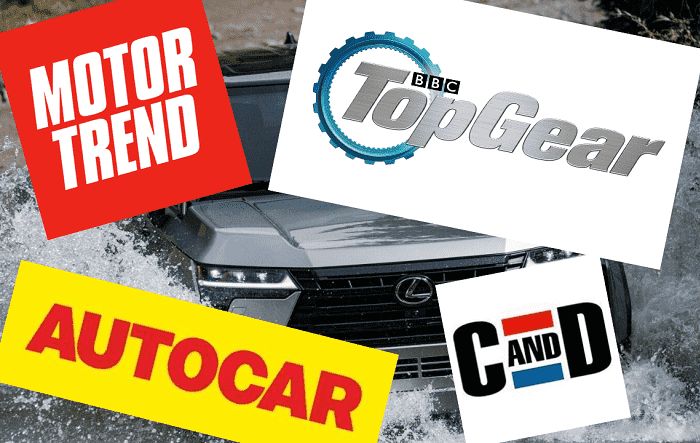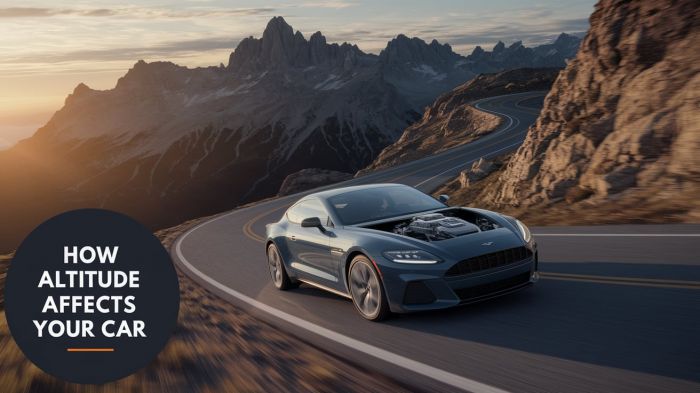Giant engines are a necessary part of many work vehicles. The choice between a Ford 7.3 Godzilla gas engine and a 6.7 Power Stroke diesel engine can be difficult, but there are some factors to consider when making your decision. Each engine has its own unique advantages as well as disadvantages over the other, so it's important to understand what you need your vehicle to do before you make a purchase. Here, we'll take a look at the two power units and help you decide which is best for your needs.
.jpg)
Key features and my opinion about the 6.7 Power Stroke engine
- Production years:2011-2016
- Average lifespan of 6.7 Power Stroke:240,000-270,000 miles
- Fuel supply type:Common Rail
- Power range:330-475 hp
- Fuel efficiency:average
- Engine block material:cast-iron
- Engine reliability score:medium
- The most common problems:turbo problems, cooling system issues, weak sensors, CP4 pump problems.
Key features and my opinion about the 7.3L Godzilla engine
- Production years:2020-now
- Average lifespan of 7.3L Godzilla:400,000-500,000 miles
- Fuel supply type:port injection
- Power range:300-430 hp
- Fuel efficiency:awful
- Engine block material:cast-iron
- Engine reliability score:high
- The most common problems:phasers are faulty, oil and coolant leaks, enormous fuel consumption.
Ford 7.3 Gas VS 6.7 Diesel Point-by-Point Comparison
The Ford 7.3 Godzilla gas engine only began its production in 2020. Meanwhile, the 6.7 Power Stroke diesel has been around since 2011. So, in order to make a more accurate apples-to-apples comparison, most of the elements presented here are grounded on the 2020 and above models of both engines, except in some cases wherein we had to go over their history.
- Power
How much power do you need? More powerful engines can handle more strenuous tasks, but they may also use more fuel. Consider what you'll be using the engine for and how much power you'll actually need.
When it comes to giant engines, the Ford 7.3 engine is a real Godzilla. The unit is gasoline fed and naturally aspirated. It has a displacement of 444.9 cu in with a 10.5:1 compression ratio. The engine features 16 valves, a bore of 4.22 inches, and a stroke of 3.976 inches. The block is made of cast iron while the head material utilizes aluminum contributing to the 540 lbs total weight of the engine.
The Ford 7.3 gas is known for its power, making it a good choice for work vehicles. With 430 hp at 5,500 rpm and 475 lb-ft of torque at 4,050 rpm, it has more than enough power to handle most tasks you might need it for. Paired with a heavy-duty truck, it is very handy for towing heavy equipment weighing up to 19,500 lbs and carrying a payload of up to 4,210 lbs.
In comparison, the Ford 6.7 Power Stroke diesel is a real powerhouse and more capable machine than the 7.3 gas in work-related tasks. The turbocharged engine offers a lower displacement at 406 cu in but boasts a superior compression ratio of 15.8:1. It has 32 valves with a smaller bore measuring 3.897 inches but with a bigger stroke that's 4.25 inches in diameter. The block material is compact graphite iron-based while the head is aluminum-based taking the engine's weight to 970 lbs.
With 475 hp at 2,600 rpm and a massive torque of 1,050 lb-ft, the Ford 6.7 diesel has plenty more power to offer than the 7.3 gas engine. It is built for heavy workloads, too, with up to 30,000 lbs towing capacity and 12,000 lbs carrying capacity on the bed.
In their factory forms, the 6.7 diesel clearly has more power, payload capacity, and towing capacity versus the 7.3 gas, which is more advantageous when it comes to getting more work done in a more efficient manner.
- Fuel Efficiency
This is especially important if you'll be using the engine for long periods of time or for tasks that require a lot of power. Choose an engine that is fuel-efficient to save money and time spent refueling.
The Ford 7.3 gas engine is known for its fuel efficiency. According to owners, their vehicles equipped with the engine can reach 17 miles per gallon (highway), which is very economical compared to the offerings from other brands.
The Ford 6.7 Power Stroke diesel engine, however, tips the scales in its favor with its estimated 20 miles per gallon consumption, making it a more favorable choice for work trucks that usually travel long routes.
Do note that the figures here may vary depending on the vehicle type, workload, and driving habits of owners. The numbers stated here are based on optimal values derived from standard cruise speeds of 55 mph to 75 mph with light to medium road traffic plus no cargo and equipment in tow according to actual reviews and reports of owners and testers.
- Durability
If you want an engine that lasts. Choose the one that is made with high-quality materials and that has a reputation for being durable so you can utilize it to its fullest potential for years to come.
The Ford 7.3 gas engine seems like a durable product but actual figures regarding its longevity are not that reliable yet because it only came out in 2020 making it a relatively young model. But if the 300,000-mile life of its predecessor is any indication, then we could be looking at a very reliable engine here.
The Ford 6.7 diesel engine has a long line of history marked by positive reviews from owners. These factors definitely speak about its quality. According to users, it is capable of lasting over 250,000 miles before requiring an overhaul.
Once again, be reminded that the impressive mileage shown here is coupled with regular maintenance and proper care. These projections also come with the condition that the engines are kept in their factory configurations throughout their usable lives.
In terms of their respective engineering, there are several factors to consider when determining which is more durable between the 7.3 gas made of a cast-iron block and the 6.7 diesel housed by a compact graphite iron block. One factor to consider is the composition of each material. Cast iron contains more carbon than compact graphite iron, which gives it greater strength and durability. Additionally, compact graphite iron has a higher silicon content, which makes it more resistant to wear and tear.
Another factor to consider is the manufacturing process of each material. Compact graphite iron undergoes a special casting process that strengthens the metal and makes it more resistant to cracking and breaking. This makes compact graphite iron a more durable choice for engines than cast iron.
Overall, both materials have their own advantages and disadvantages when it comes to durability. However, compact graphite iron is generally more durable than cast iron, making it the better choice for engines.
- Common Problems
Some engines require more maintenance than others due to their tendency to develop issues after prolonged use. Mitigate your risks and maximize your savings by choosing an engine that has a good track record.
Engines are not perfect, and even the most well-made ones can have problems from time to time. It's important to be aware of any potential engine issues before you make a purchase.
The Ford 7.3 gas engine has been known to have some common problems amid its only a couple of years of production. Some of the most common issues include overheating, fuel injection problems, coolant leaks, and ignition coil failures. While most of the mentioned issues are relative to the abuse they get from users, Ford has acknowledged a factory defect on the underside of the Godzilla's engine cover through a recall announcement in 2020. The company offered free repairs for this potential fire hazard immediately.
The Ford 6.7 diesel engine has been here longer than the 7.3 gas so it has accumulated more customer complaints over the years. Some of the most common issues include overheating, turbocharger issues, fuel injection problems, and emissions system failures. 2020 model year pickups fitted with the engine had their own share of serious recalls in the past two years as well. However, it is more on the transmission partnered to it rather than the engine per se.
Which Engine Is Right for You?
Now that we've looked at the most important factors to consider, it's time to decide which engine is right for you. Based on our comparison, the 6.7 Power Stroke diesel certainly holds more advantages than the 7.3 Godzilla gas when it comes to working applications.
- The stock 6.7 diesel engine has superior compression at 15.8:1 versus the 7.3 gas engine's 10.5:1.
- The factory output of the 6.7 turbocharged diesel engine has 45 hp and 575 lb-ft of torque more than the 7.3 gas engine.
- Partnered with a very capable heavy-duty truck, the 6.7 diesel engine can tow 10,500 lbs and carry 7,790 more.
- The 6.7 diesel boasts a gas mileage advantage.
- The 6.7 diesel uses sturdier materials in its engine design.
- From 2020 onwards, there are no engine-related recalls for the 6.7 diesel while the relatively new 7.3 gas already has one in 2020.
Nonetheless, even if the 6.7 diesel engine outclassed the 7.3 gas engine in many ways here, it can't be denied that the latter still possesses features that allow it to give out high-performance rides and economical fuel consumption.
So, no matter which engine you choose, you can be confident that you're getting a quality product that will serve you well for years to come. Choose only the engine that best meets your needs so you will no longer have to worry about your vehicle and you can just focus on your more important tasks at work.
About the authors
The CarAraC research team is composed of seasoned auto mechanics and automotive industry professionals, including individuals with advanced degrees and certifications in their field. Our team members boast prestigious credentials, reflecting their extensive knowledge and skills. These qualifications include: IMI: Institute of the Motor Industry, ASE-Certified Master Automobile Technicians; Coventry University, Graduate of MA in Automotive Journalism; Politecnico di Torino, Italy, MS Automotive Engineering; Ss. Cyril and Methodius University in Skopje, Mechanical University in Skopje; TOC Automotive College; DHA Suffa University, Department of Mechanical Engineering






Add comment